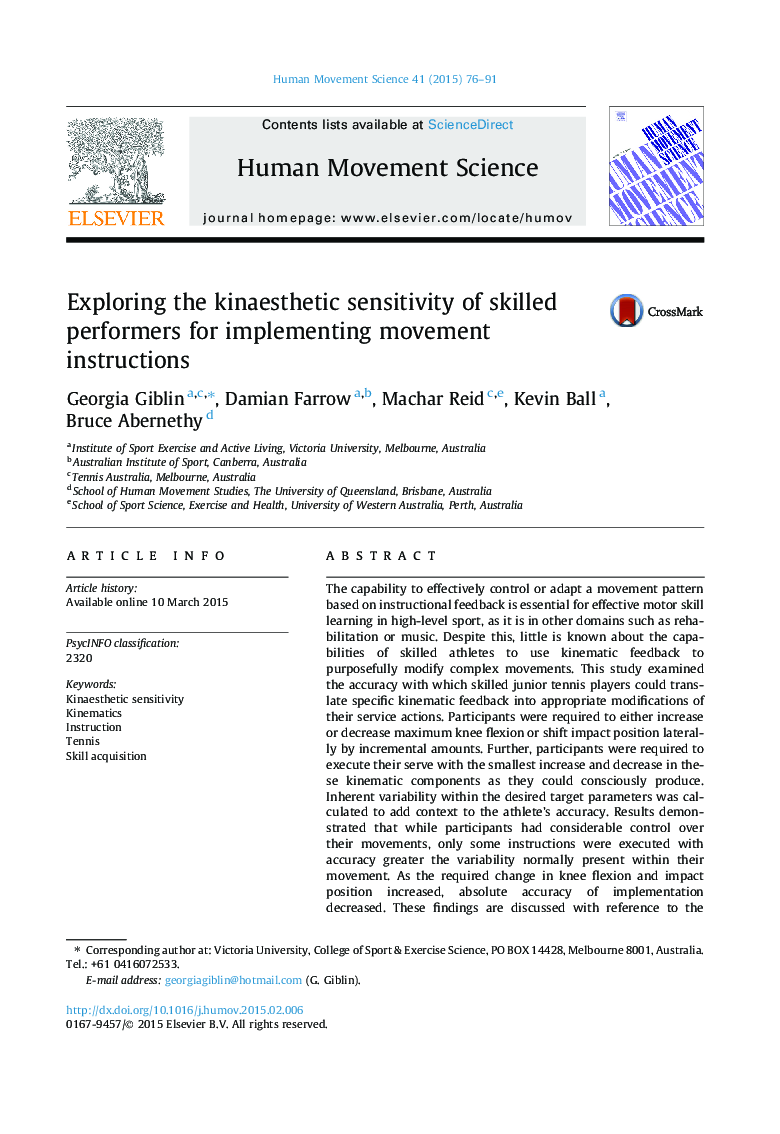| Article ID | Journal | Published Year | Pages | File Type |
|---|---|---|---|---|
| 7291957 | Human Movement Science | 2015 | 16 Pages |
Abstract
The capability to effectively control or adapt a movement pattern based on instructional feedback is essential for effective motor skill learning in high-level sport, as it is in other domains such as rehabilitation or music. Despite this, little is known about the capabilities of skilled athletes to use kinematic feedback to purposefully modify complex movements. This study examined the accuracy with which skilled junior tennis players could translate specific kinematic feedback into appropriate modifications of their service actions. Participants were required to either increase or decrease maximum knee flexion or shift impact position laterally by incremental amounts. Further, participants were required to execute their serve with the smallest increase and decrease in these kinematic components as they could consciously produce. Inherent variability within the desired target parameters was calculated to add context to the athlete's accuracy. Results demonstrated that while participants had considerable control over their movements, only some instructions were executed with accuracy greater the variability normally present within their movement. As the required change in knee flexion and impact position increased, absolute accuracy of implementation decreased. These findings are discussed with reference to the smallest controllable changes produced by the athletes and the variability within their actions.
Related Topics
Life Sciences
Neuroscience
Cognitive Neuroscience
Authors
Georgia Giblin, Damian Farrow, Machar Reid, Kevin Ball, Bruce Abernethy,
